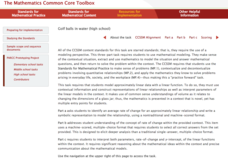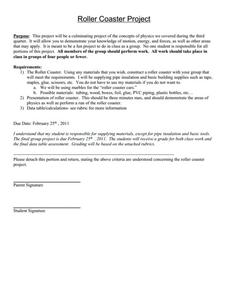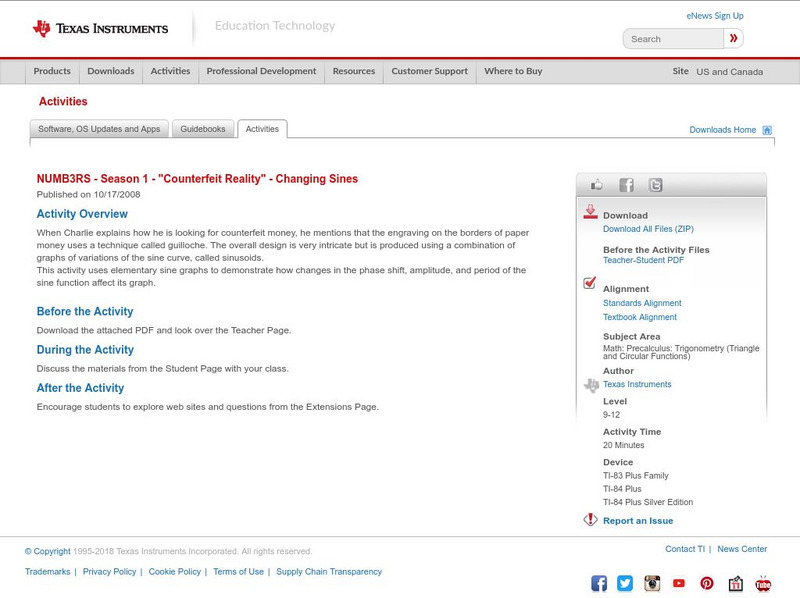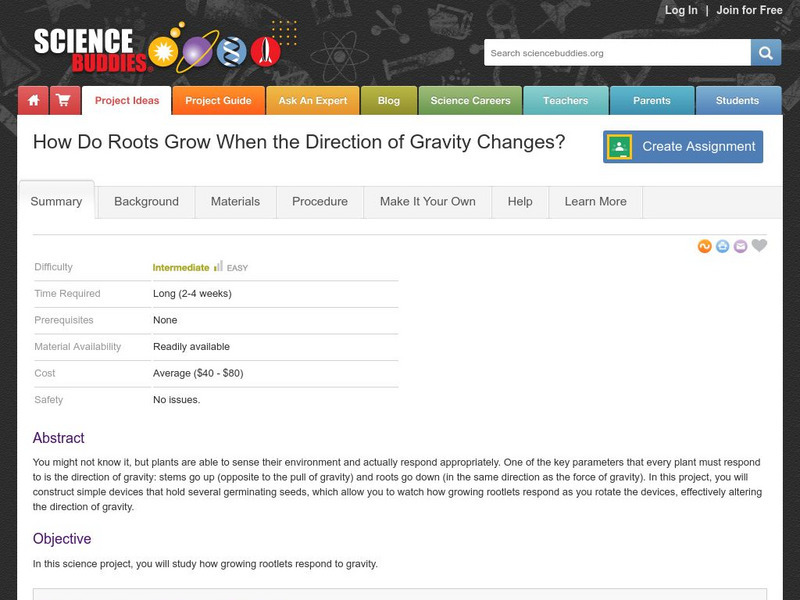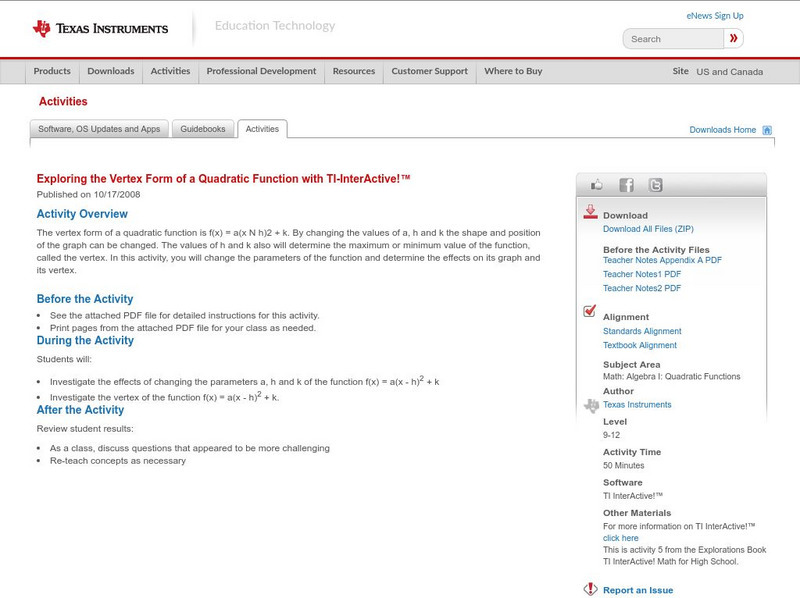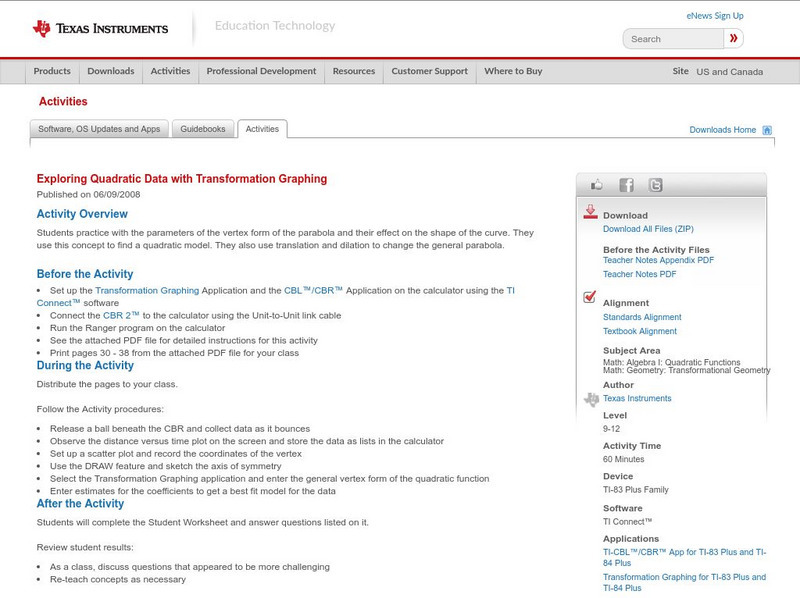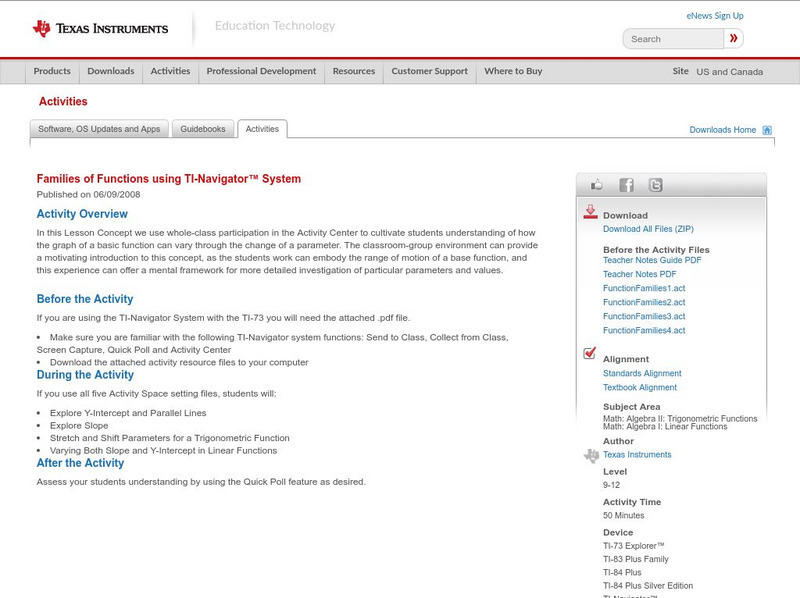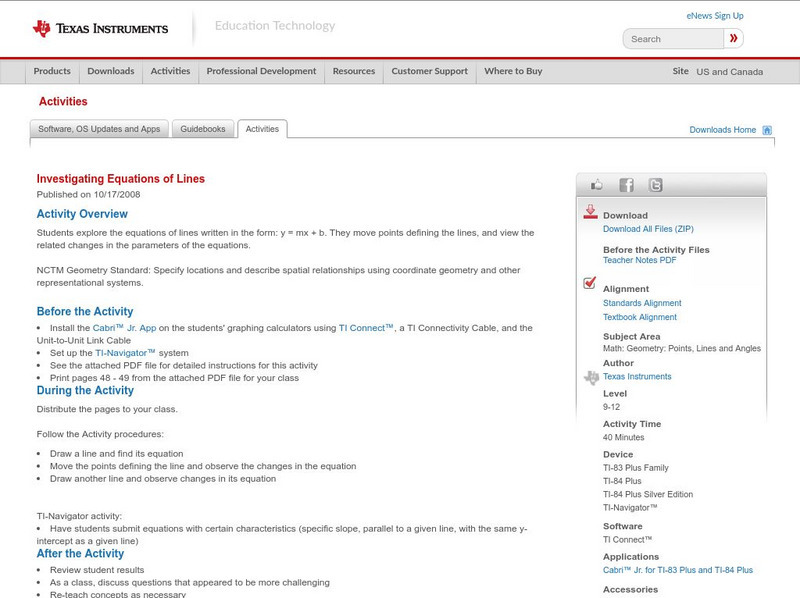Khan Academy
Challenge: Moles in Holes
Move the moles to the holes in this simple coding exercise on using parameters in function calls. The task is broken down for you and the function that draws the mole is already provided. Your job is to add JavaScript code to call the...
Mathematics Common Core Toolbox
Golf Balls in Water
Here's a resource that models rising water levels with a linear function. The task contains three parts about the level of water in a cylinder in relationship to the number of golf balls placed in it. Class members analyze the data and...
Khan Academy
Challenge: Funny Face
A simple face can draw on the computer canvas using four lines of code each containing slightly different parameters to the ellipse function. Learners are guided through making changes to certain features such as making the mouth or eyes...
Khan Academy
Challenge: Say Your Name
Practice creating and using functions in a simple JavaScript coding exercise. Move code inside the function definition and then add lines to call the simple function. Adding function parameters and return values are covered later in this...
Illustrative Mathematics
Baseball Cards
Here is a resource that demonstrates growth and the initial state of an equation. In this case, your class will be looking at baseball collections. How many baseball cards did the collector start out with, and how many were added or...
Anchorage School District
Roller Coaster Project
Emerging engineers work in teams to design pipe insulation roller coasters for marbles that meet specific parameters. They are required to label along the track the areas where kinetic and potential energy are highest and lowest, where...
Colorado State University
If You Can't Predict the Weather, How Can You Predict the Climate?
Why is the weather man wrong so often? Young climatologists discover how chaos rules both weather and climate through a math-based activity. Using an iterative equation, the class examines how small day-to-day weather events total up to...
Teach Engineering
Computer Simulation of the Sonoran Desert Community
See how changes in initial populations and parameters affect a biological community. Individuals use a special software program to simulate a desert community with five species. They adjust initial populations to see how the community...
Teach Engineering
Ice, Ice, PV!
Knowing the temperature coefficient allows for the calculation of voltage output at any temperature. Groups conduct an experiment to determine the effects of temperature on the power output of a solar panel. The teams alter the...
Firelands Local Schools
Exponential Growth and Decay
How can you safely model exponential growth and decay? A hands-on activity uses candies to model not only exponential decay, but also exponential growth. Exponential equations are fitted by hand and by use of a calculator...
Khan Academy
Challenge: SmileyFace
Two smiley faces are better than one. The interactive lesson challenges pupils to use methods to alter a program to make it more efficient. Individuals use the new code to create multiple smiley faces that speak. The engaging activity is...
Agile Mind
Rabbit populations
For this real-world problem about the rapid growth of rabbit populations, students must analyze two different scenarios and create mathematical models to represent them. They use their exponential models to answer questions about the...
Agile Mind
Transforming Graphs of Quadratic Functions
In the activity on this webpage, learners use interactive graphing technology to investigate transformations of graphs. In the first part of the task, they look at the graph of a quadratic function with coordinates of a few points...
Texas Instruments
Texas Instruments: Numb3 Rs: Changing Sines
Based off of the hit television show NUMB3RS, this lesson introduced students to the various parameters used in graphing the elementary sine function. Technology use is very heavy, as students are encouraged to graph different sinusoidal...
Science Buddies
Science Buddies: How Do Roots Grow When the Direction of Gravity Changes?
You might not know it, but plants are able to sense their environment and actually respond appropriately. One of the key parameters that every plant must respond to is the direction of gravity: stems go up (opposite to the pull of...
Texas Instruments
Texas Instruments: Construction Tools: Interactive Function Graphs
Students draw a dynamic graph of the quadratic function with interactive parameters. They understand that there is only one graph of the function that changes dynamically as the values of the parameters change.
Texas Instruments
Texas Instruments: Transformation Graphing App
This App helps students improve graphing comprehension. They input functions, view visual diagrams of functions, and observe changes in the function as the parameters change.
Khan Academy
Khan Academy: Spring Mass System With Support Springs
In this activity, students practice changing the parameters in the simulation below. What sort of hairstyles can you make?
Texas Instruments
Texas Instruments: Exploring the Vertex Form of a Quadratic Function
In this activity, you will change the parameters of the function and determine the effects on its graph and its vertex.
Texas Instruments
Texas Instruments: Exploring Quadratic Data With Transformation Graphing
Students practice with the parameters of the vertex form of the parabola and their effect on the shape of the curve. They use this concept to find a quadratic model. They also use translation and dilation to change the general parabola.
Texas Instruments
Texas Instruments: Families of Functions Using Ti Navigator System
In this Lesson Concept we use whole-class participation in the Activity Center to cultivate students understanding of how the graph of a basic function can vary through the change of a parameter. The classroom-group environment can...
Texas Instruments
Texas Instruments: Wrapping It All Up
Students recognize the effects of changes in parameters on the graphs of linear, quadratic, and exponential functions.
Texas Instruments
Texas Instruments: Investigating Equations of Lines
In this activity, students explore the equations of lines written in the form: y = mx + b. They move points defining the lines, and view the related changes in the parameters of the equations.

